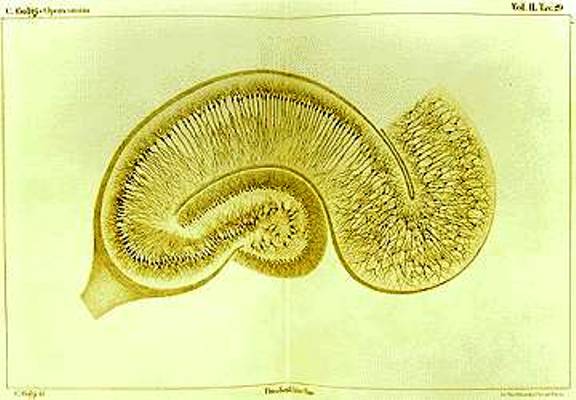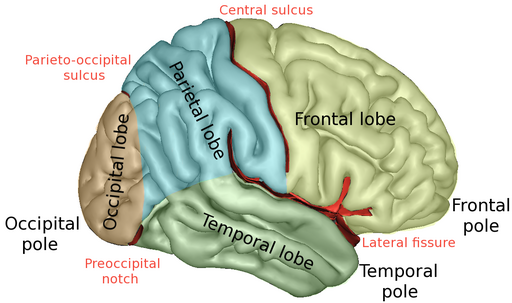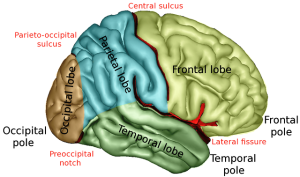
Memory 103 Memory and the Brain – a brief look at the parts of the brain involved in memory. Last week in Memory 102 we focussed on the differences between short term and long term memory. A brief look at what memory is and how it works was covered in the first of the series Memory 101.
Why another anatomy and physiology lesson?
Knowledge of memory and the brain helps expand understanding that:
The part of the brain damaged will determine the physical and cognitive affects of brain injury. This includes memory.
The parts of the brain thought to aid memory can help understand the kind of memory loss a person has after brain injury.
Memory is not one thing. There is not one part of the brain labelled memory. Understanding a little of the anatomy can help to understand how memory functions and the complex and different types of memory.
A bit of knowledge about memory and the brain along with information on where specific damage is – can help develop the best strategies for each person.
It can give clues as to how you might go about teaching or relearning a skill or activity. It can guide what type of memory aids might be best.
A Memory Disclaimer
The brain is not the perfect recorder of events and information we sometimes think it is. The brain has a number of quirks that prevent accurate recall with, or without, brain injury. The brain is like that friend who prefers to catastrophise, who loves to focus on the terrible deeds rather than the facts before them. That friend who is quite sure they remember details accurately and vividly even when presented with evidence that it is not quite right.
Memory and the Brain – What Helps Us Remember
This National Geographic interactive site has great visual information about memory and the brain. Just click in the box below:
[box size=”medium” style=”rounded” border=”full”]National Geographic Memory and the Brain an Interactive[/box]
Our Microscopic Memory Highway
In the very tiny microscopic work of the brain new information enters your brain and whizzes along pathways jumping along from neuron to neuron heading to the appropriate areas of the brain.
To make it happen millions of cells become activated by neurotransmitters (chemicals that help the work of the brain). The more a pathway is used the more likely the memory will stick, and be remembered.
The Bigger Brain Picture of Memory
The Brain From Top to Bottom provides more detail on memory and how structures in the brain help remembering.
Cerebral Cortex
This is the outer layer of the brain, and it stores most long-term memories. These are stored in different zones, depending on what kind of processing the information relates to. Language in one area, vision in another, problem-solving, and other sensory information in yet other areas.

Association cortices.
Simply this means – parts of the cerebral cortex that ‘associate’ or link stuff with other stuff to make it useful.
Association cortices are found in many parts of the brains outer layer. These areas make information useful by helping to combine and work out the meaning of sensory, visual, auditory, and motor information.
You read this article and not only see black marks on the page you understand that these are words. You link the words into meaningful sentences. You can even make it into spoken word and other forms should you choose.
NeuroScience for Kids provides a chart with explanation of the areas involved in the article Functional Divisions of the Cerebral Cortex
Limbic System
The Limbic system is not usually a part of the brain put first on a list. It is today because of its importance in making and storing new memories.
It is a small part of the brain, deep in the oldest part.
The Limbic system is thought to be where STM is converted into LTM.
The Hippocampus – Star of the Memory Show
The Hippocampus is part of the Limbic system deep within our brain. It appears to be a major player in memory:
helping memories stick – to become long term memories.
sending signals to appropriate areas of the brain to store information as long-term memory.
helping us remember something in the future. During brain images it appears to be the Hippocampus that becomes active when people think about future.
People with damage to the Hippocampus tend to lose episodic memory and the ability to imagine the future.
How Your Brain Tells You Where You Are is a TED talk describing the Hippocampus and its role in memory and knowing where you are.
An interesting note about smell and memory – smell goes directly to the Limbic system – not to the smell centre in the brain. This makes smell a powerful link with emotions.
Rita Carter in Mapping the Mind pg 186 – describes a study where students learning words were given an unusual smell as they learned and again at time of recall. The students showed a 20% improvement in memory.

Also part of the Limbic system, it lives near the hippocampus.
It is thought that the Amygdala helps move emotional memories from short to long term memory.
It processes emotion and then helps make the memories that involve emotion.
An action, task, event linked to a strong emotional connection appears to have an increased chance of being remembered.
Cerebellum
It sits at the back of the brain and is important for procedural memory – how we do stuff.
It is also important in motor skill learning.
See Diagram above showing Hippocampus, Amygdala and Cerebellum.
Frontal lobes
The frontal lobes are thought to help co-ordinate information needed for memory –
[unordered_list style=”green-dot”]
- getting information and experiences from various parts of the brain to come together to perform a task.
- remembering what is needed to learn new things,
- accessing memory to assist cognitive or thinking processes.
- selecting out the best match of memory stored for what is required
- remembering what we need to do in the future
[/unordered_list]

Parietal, Occipital and Temporal lobes
These are all important for the storage of particular memories mainly related to sensory information –
Parietal: touch and feel
Temporal: auditory
Occipital: vision
Left hemisphere
generally for memory of verbal material, language
Right hemisphere
Generally for memory of visual material
Want more about memory and the brain. Click Here to see a selection of TED talks about memory.
And Finally A Reminder About Memory and the Brain
The part of the brain damaged will determine the physical and cognitive affects of brain injury. This includes memory.
Memory is not one thing. There is not one part of the brain labelled memory.
Memory is complex. It has different types including long term and short term memory xxx. It happens in many different areas of the brain.
Understanding a bit about memory and the brain combined with knowing where the specific damage is – can help develop the best strategies for each person. It can give clues as to how you might go about teaching or relearning a skill or activity. It can guide what type of memory aids might be best.
Knowledge of memory and the brain can help you not to personalise memory difficulty and remind you of the need for patience.
